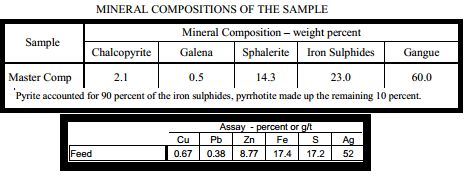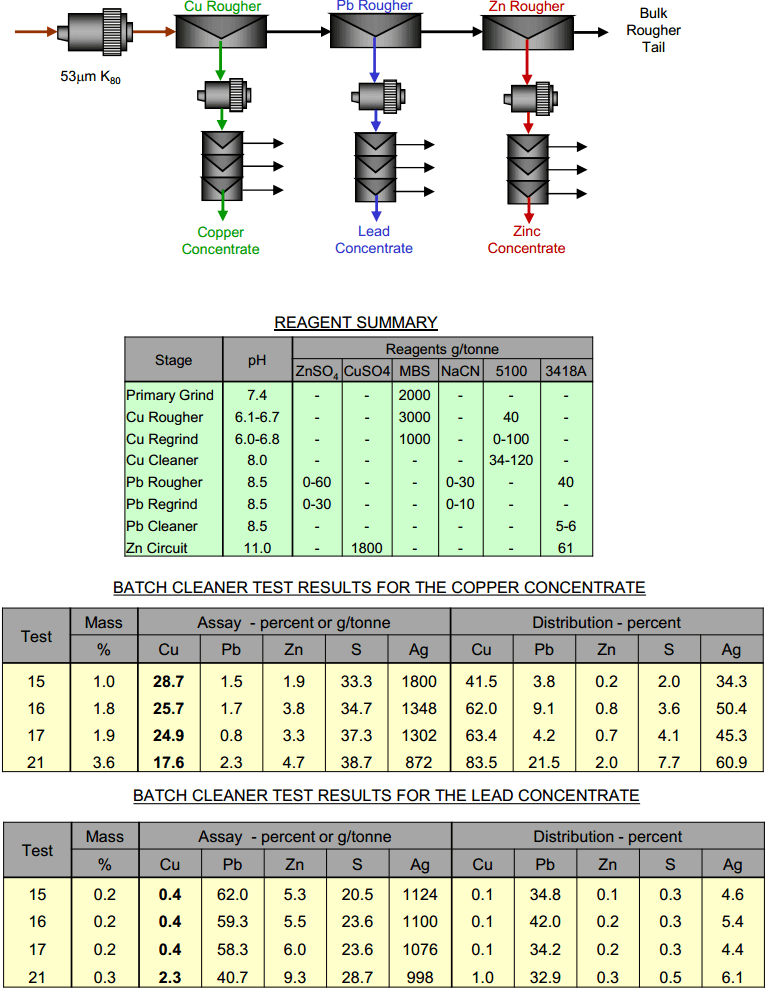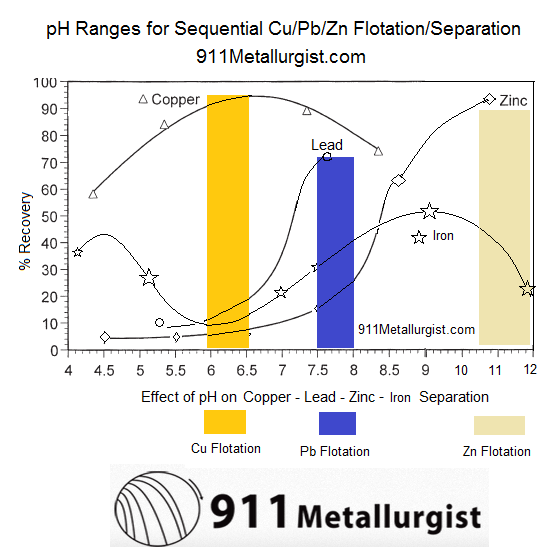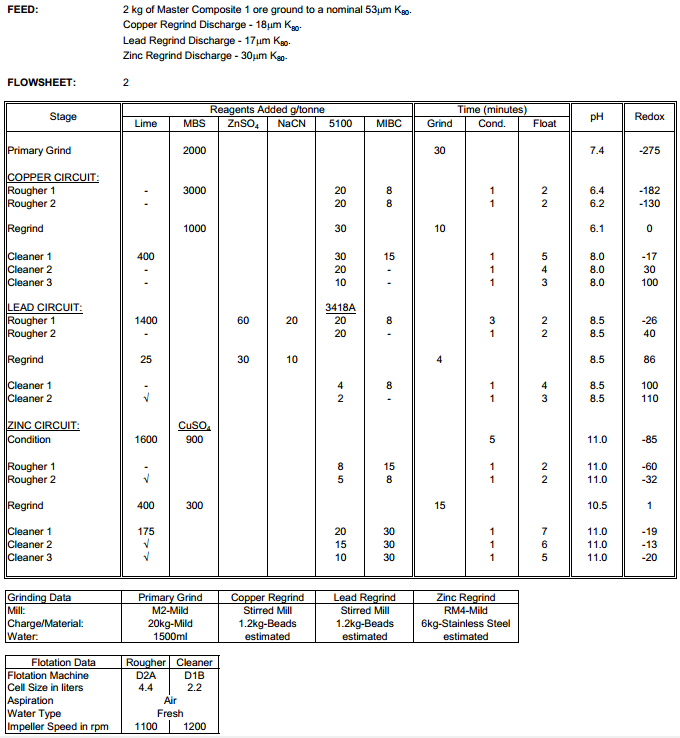To improve the selectivity between copper and lead, a sequential copper-lead-zinc rougher circuit was tested. Each of the rougher circuits had a dedicated regrind and cleaner circuit. The advantages of the sequential circuits are that the levels of selectivity can be increased, particularly for copper and lead.
With this process, copper was recovered first with MBS depression of lead, zinc and pyrite. Lead was recovered after conditioning, utilizing cyanide as the base depression scheme to control sphalerite and pyrite.  In these tests, a zinc flotation was also performed to measure the metallurgical performance of that metal. The flowsheet schematic and summary of test results.
In these tests, a zinc flotation was also performed to measure the metallurgical performance of that metal. The flowsheet schematic and summary of test results.
As shown in the summary tables, copper was, on average, 63% recovered into the copper concentrate grading 24% copper. The recovery and grade of unwanted lead and zinc was very low when compared to the other flowsheets.
Lead in the feed was, on average, 36% recovered into a concentrate, grading 55%. Similar to the copper circuit, the grade and recovery of copper and zinc to the lead concentrate was very low. Locked cycle tests would be required to determine ultimate metallurgical performance for this flowsheet and reagent scheme.
As you can see, the pH was adjusted using MBS to follow the selectivity chart below.



